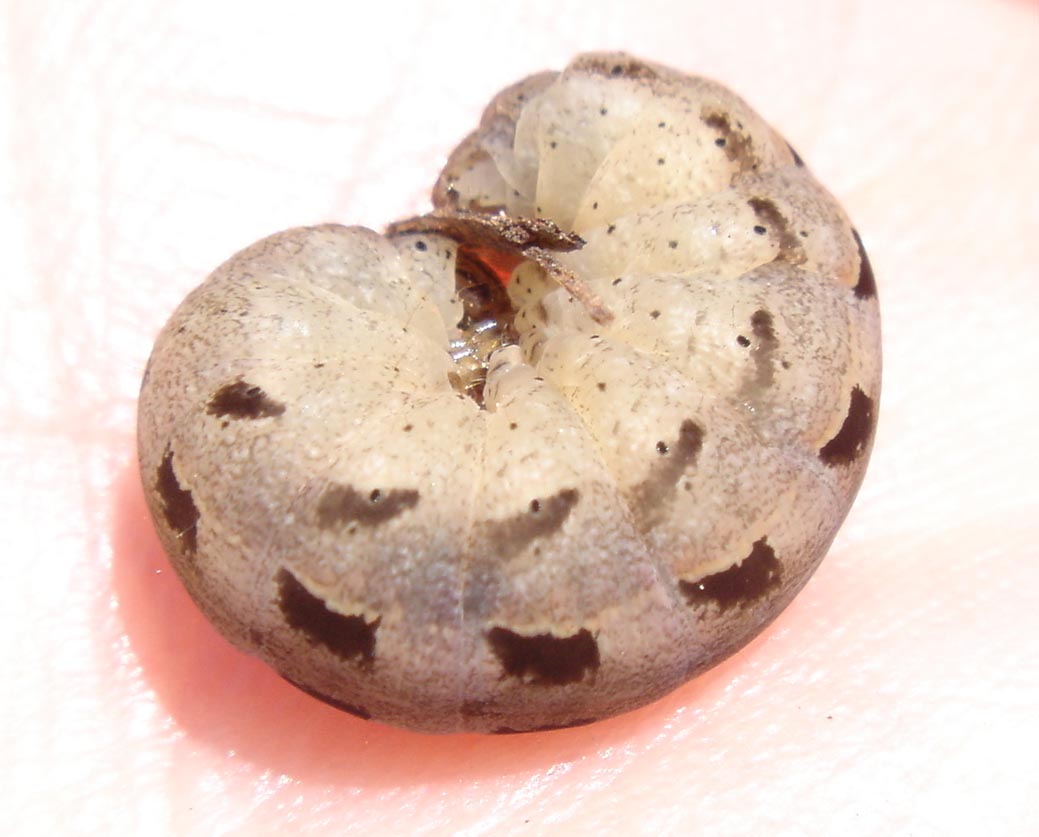 Climbing
cutworms in grapes
Climbing
cutworms in grapes
I. Introduction: There are many species of cutworms that
are found on many different crops. Several species, known as the
climbing cutworms, tend to climb grapevines and fruit trees in
spring and feed on the buds and young foliage. The large larvae
cause similar kinds of injury and the robust adult moths of each
species are similar in appearance to each other. At least 10
species of climbing cutworms cause damage to fruit trees in the
eastern U.S. and Canada, but the six species listed above are
the most common and widely distributed. Climbing cutworms are
sporadic pests, mainly in sites with sandy soils, where they may
completely strip the buds and
young shoots in the spring.
II. Hosts: Climbing cutworms can be found on grape, apple, peach, pear, and plum. Ash, boxelder, birch, boxelder, maple and other species are also fed upon.
III. Description: The larvae of
climbing cutworms are large, smooth caterpillars, measuring 1.2
to 1.6 inches (30 to 40 mm) when fully grown (see larger image). The body has only a few hairs and the head
capsule is usually brown or black; some have unusual markings on
the head. Larvae of the different species vary in color with
most species having a dull gray-brown background color with
various species having stripes, spots, or marked with dark
brown, black, yellow and white splotches. The dark brown pupae
resemble those of leafrollers, but are much larger in size [i.e.
>0.8 inch (20 mm)]. The adults are dark brown or grayish
colored moths that look quite similar and have wingspans of
about an inch (25 mm).
IV. Biology: The
biology
of
the
various
climbing
cutworms varies considerably but the peak flight periods and
generations for some of the common species are listed above. The
most common species have one or two generations per year and
overwinter as half-grown larvae on the soil in leaf litter and
orchard debris. A few other species overwinter as eggs or even
as adults. The species which overwinter as larvae begin to
become active as the weather warms, generally in mid-April. This
group of moths derives its name from the larval habit of
climbing trees to feed on buds and young foliage during the
night, and then crawling back down to the ground to seek shelter
under leaf litter, killed grass,
or debris on the vineyard floor during the day. The larvae often
curl up tightly when disturbed. Hundreds of larvae may feed on a
single tree. The larvae mature by May and enter the soil to
construct pupal chambers. In two-generation species, second
generation feeding is minor.
Adult emergence varies among species as shown above, but the
most common species are on the wing from June through September.
Eggs are laid on leaves, twigs, bark or even grasses. Newly
hatched larvae of the single generation species seek low
vegetation on which to feed until fall when they move to the
ground seeking overwintering sites. Species with multiple
generations per year generally overwinter as eggs.